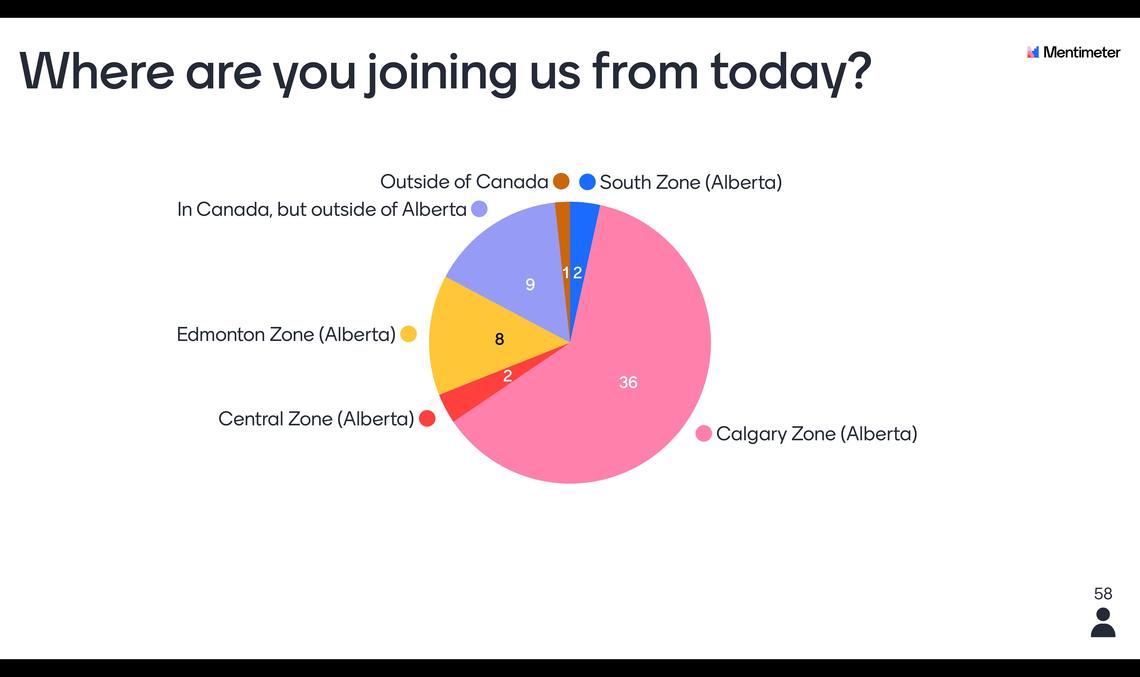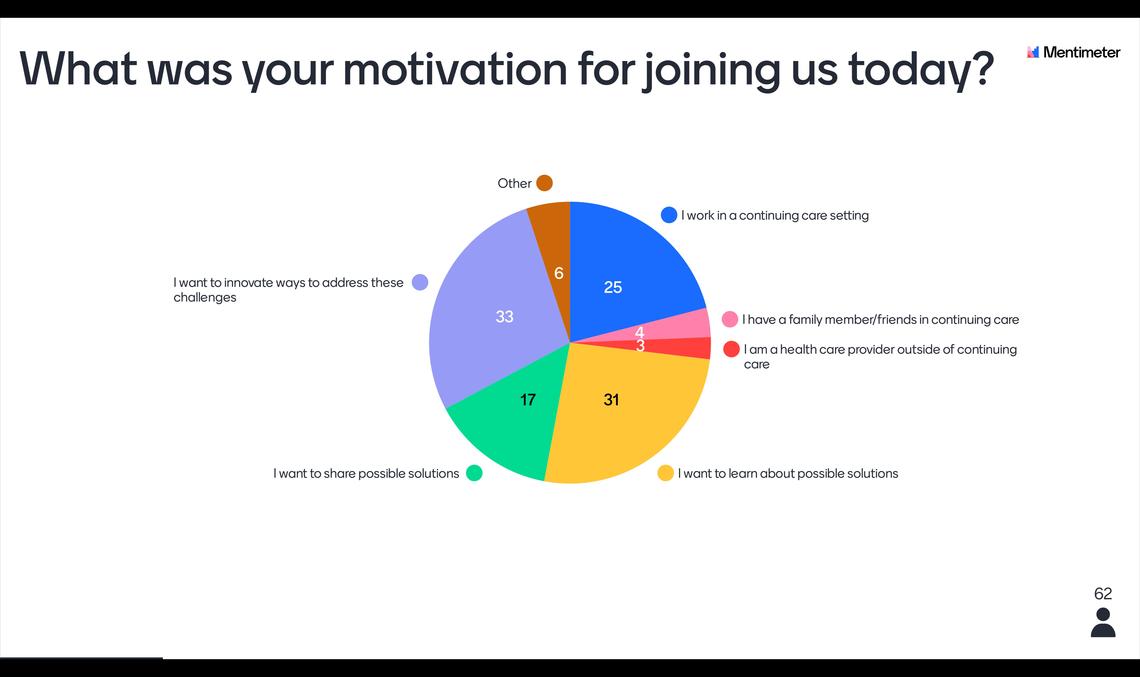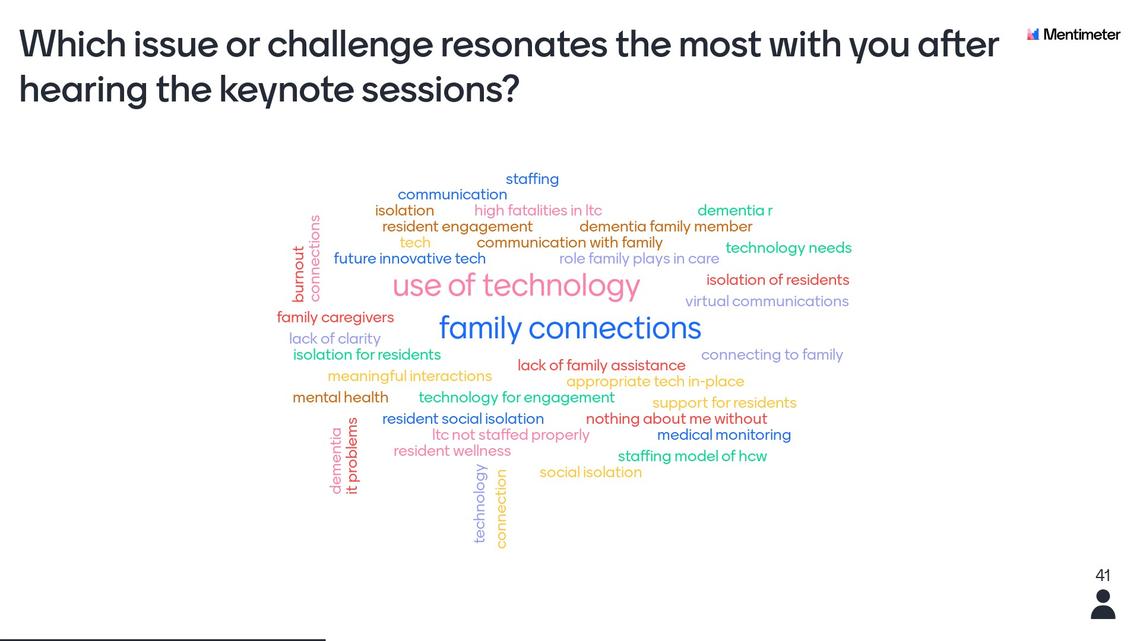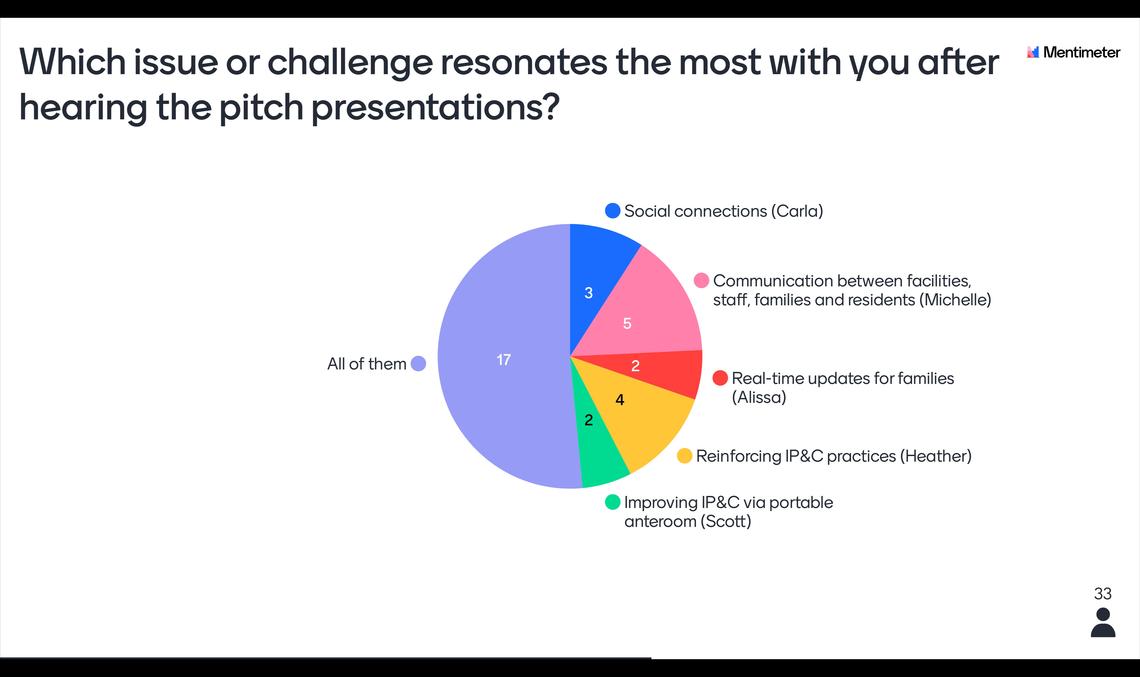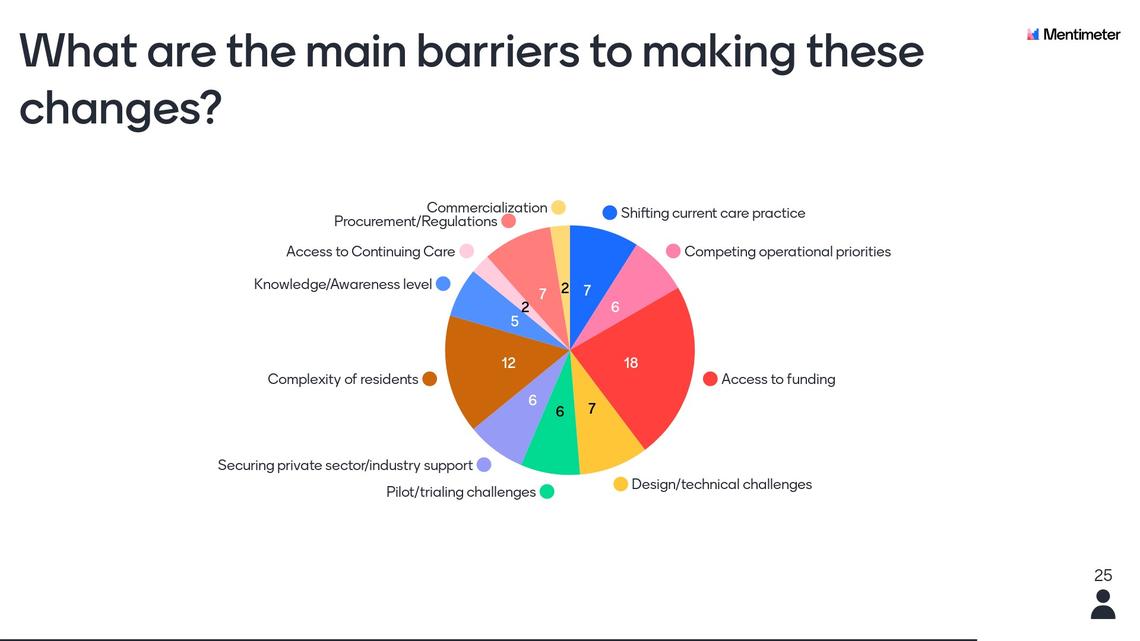
Rapid Solutions for COVID-19 in Continuing Care
Virtual Reverse Trade Show
The residents, their families, and staff of continuing care facilities have borne the brunt of the COVID-19 pandemic in Canada. All agree we must address the challenges of continuing care brought to light during this pandemic, and better prepare for future outbreaks.
This Virtual Reverse Trade Show, which took place July 7, 2020, was a unique opportunity to connect healthcare providers with industry and entrepreneurs to maximize opportunities for conversations and to develop connections that address real-life issues.
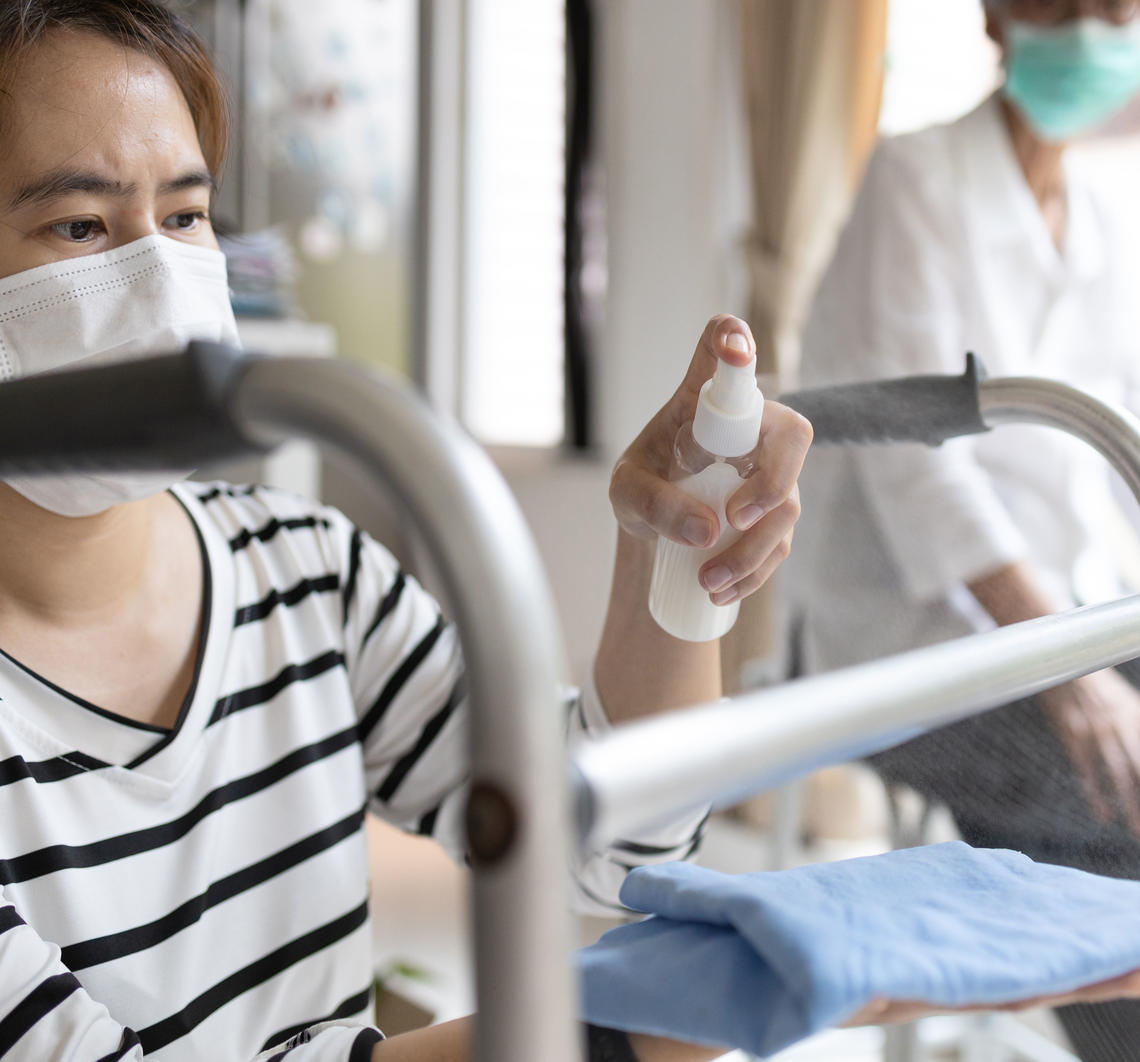
THE CHALLENGE
The focus of this Reverse Trade Show was to find technical solutions that would help continuing care facilities prepare for the expected next wave of COVID-19 and other potential future outbreaks.
We were specifically looking for technology-based solutions that addressed:
- Communicating with staff and contact tracing
- Enhancing staff and resident well-being
- Infection Prevention and Control (IP&C) - education and reinforcement
Facilitating social connections during COVID-19
Carla Ikert, CapitalCare, Edmonton
The use of technology to aid in scheduling visits and/or an easy-to-use video and audio communications platform for people with cognitive impairment.
Enhancing communication / connection between facilities, staff, families, residents
Michelle Sharpe, Alberta Health Services
A one-stop-shop ‘knowledge library’ with scheduling capabilities allowing access to facility-specific info, updates, and visiting schedule options wherever their loved one is located.
Resident specific updates for families in continuing care
Allissa Lau, Wing Kei, Calgary
A platform that would allow facilities to provide meaningful and individualized resident updates to families (e.g., care plans, recreation activities, etc.).
Reinforcing infection prevention and control knowledge in practice
Heather Gale, Bow View Manor, Brenda Strafford Foundation, Calgary
Technologies to aid in staff education for IP&C practices (e.g., organizational policies and procedures, PPE use, infectious exposure risk management, etc.).
Portable anteroom to enhance infection prevention and control (IP&C)
Scott Baerg, Covenant Health, Edmonton
A pop-up room that could be used to reduce the spread of infection--for staff coming on and off of a unit or facility, or a smaller version that could be used outside resident rooms.
Below are additional challenges identified by front line providers in the continuing care setting, that were not pitched during the Virtual Reverse Trade Show.
COVID-19 challenges for continuing care
- Timed hand wash stations
- UV light detection for where germs reside, like footwear
- Analysis of infection spread, modelling in continuing care to look at transmission vis-à-vis physical design
- Accurate contact tracing
- Screening for rapid COVID tests, or robotic screening
- Cleaning technology
- Negative pressure rooms
- Laneway options
- Building design and enhancements
- Detection variance to protocols (physical distancing, cleaning)
- Curriculum on what COVID-19 looks like through simulation
- Predict who from our residents/staff are at high risk (red, yellow, green)
- Analysis of infection spread, modelling in continuing care to look at transmission vis-à-vis clinical practices and procedures
- Knowledge synthesis: when to trigger various protocols, practices, etc., according to what happens in the community from an organizational perspective
- Information management – info from all sources
- Synthesize best practices, rapidly and accurately translating evidence into practice
- Virtual reality tools
- Corrective technology
- More immersive ways of learning and assessment
- Knowledge translation into practice tools
- Analysis of infection spread, modelling in continuing care to look at transmission vis-à-vis staffing practices. Matching this against healthcare workforce implications and acute care modelling
- Knowledge dissemination
- Information compliance and how to hold the attention of staff
- Tools to improve communicating with staff
- Tools to improve contact tracing
- Wellness apps
- Resident support – restrictions on freedoms and routines
- Virtual reality and virtual care for adult day programs
- Building design and enhancement for virtual or visual connections that follow social distancing protocols
- Assessing long-term impacts for residents and staff of isolation, new care delivery protocols
- Change the discourse
- Tools to highlight positive stories; Positive campaigns to counter media attention to negatives
- Tools to enhance new ways of doing things with residents
Solutions for continuing care
The following solutions are being developed by organizations who attended the July 7 Reverse Trade Show.
- 19Screen – Covid19 screening solution, more details
- AccessEMR Nursing Home – specialized electronic medical records, more details
- Tovertafel – the Magic Table, more details
- Designated Care Partner Project, more details
- MedRoad – e-Health & Telehealth solutions, more details
- Move Improve ™ app for learning and mastering technical skills, more details
- Environmental Public Health Compliance Audits and Consults – Xinc, more details
- Annabot iOS voice messaging companion, more details
- Tap In - enabling care givers and family to connect around resident care, more details
Event speakers
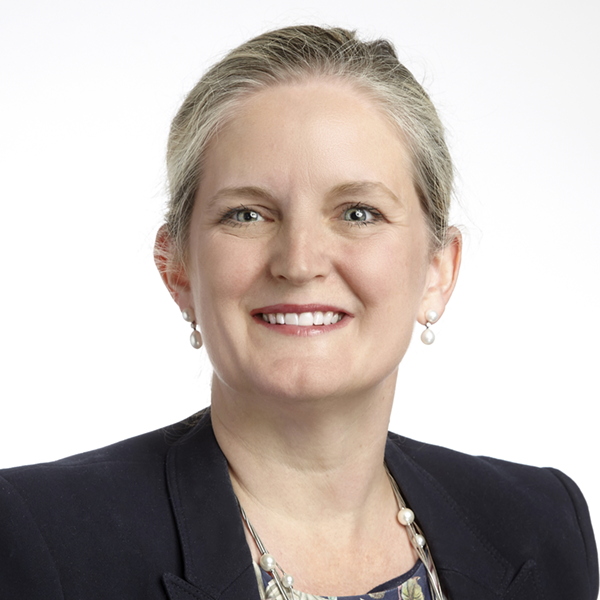
Dr. Jayna Holroyd-Leduc, MD
Dr. Jayna Holroyd-Leduc is a clinician researcher and the incoming department head, Medicine at the Cumming School of Medicine effective July 1, 2020. She is a professor in the Departments of Medicine and Community Health Sciences, the deputy head (academic) for the Department of Medicine, the division/section head of Geriatric Medicine and the current holder of the Brenda Strafford Foundation Chair in Geriatric Medicine.
Read: Continuing care and COVID-19: a Canadian tragedy that must not be allowed to happen again

Dr. Peter Brindley, MD
Dr. Peter Brindley is a full-time critical care doctor at the University of Alberta Hospital who suspects nobody cares what is written in bios. Somehow, he became a professor of critical care medicine, anesthesiology, and medical ethics, and has his name associated with over 100 peer-reviewed manuscripts, 25 book chapters, and 70 other articles, including regular (rather self-congratulatory) BMJ opinion pieces, and even a published poem.
Read: Covid-19—and now what?
More from Peter Brindley here.

Dr. Vivian Ewa, MD
Dr. Vivian Ewa's clinical practice involves hospitalist medicine and in-patient geriatric consult service at the Peter Lougheed Centre. She also provides consultation at the Bridgeland Seniors Health Centre’s specialized geriatric out-patient clinic and the home-based geriatric consult team. Dr. Ewa is a clinical assistant professor and Section Chief, Seniors Care, Department of Family Medicine, University of Calgary and Medical Director, Facility living, Alberta Health Services, Calgary Zone.
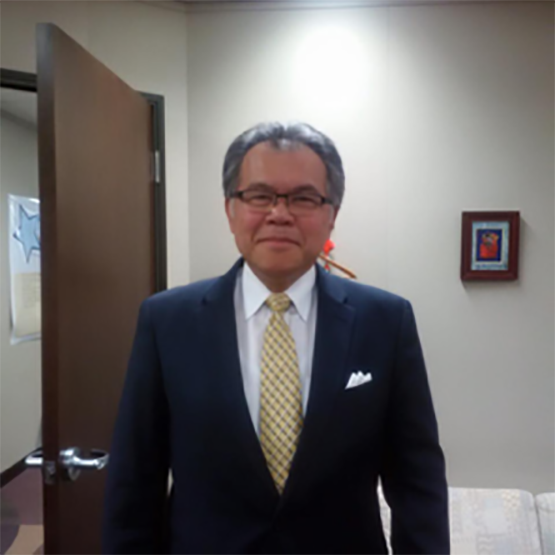
Facilitated by Mel Wong
Mel Wong is currently Senior Advisor to BioAlberta and a partner in Synergia Associates. He retired from being President and CEO of BioAlberta, the Biotechnology Association of Alberta, on December 31, 2019, a position he held since August 2015. Mr. Wong served previously as Assistant Deputy Minister (ADM) of Advanced Technology Industries within the Ministry of Innovation and Advanced Education and Economic Development and Trade.
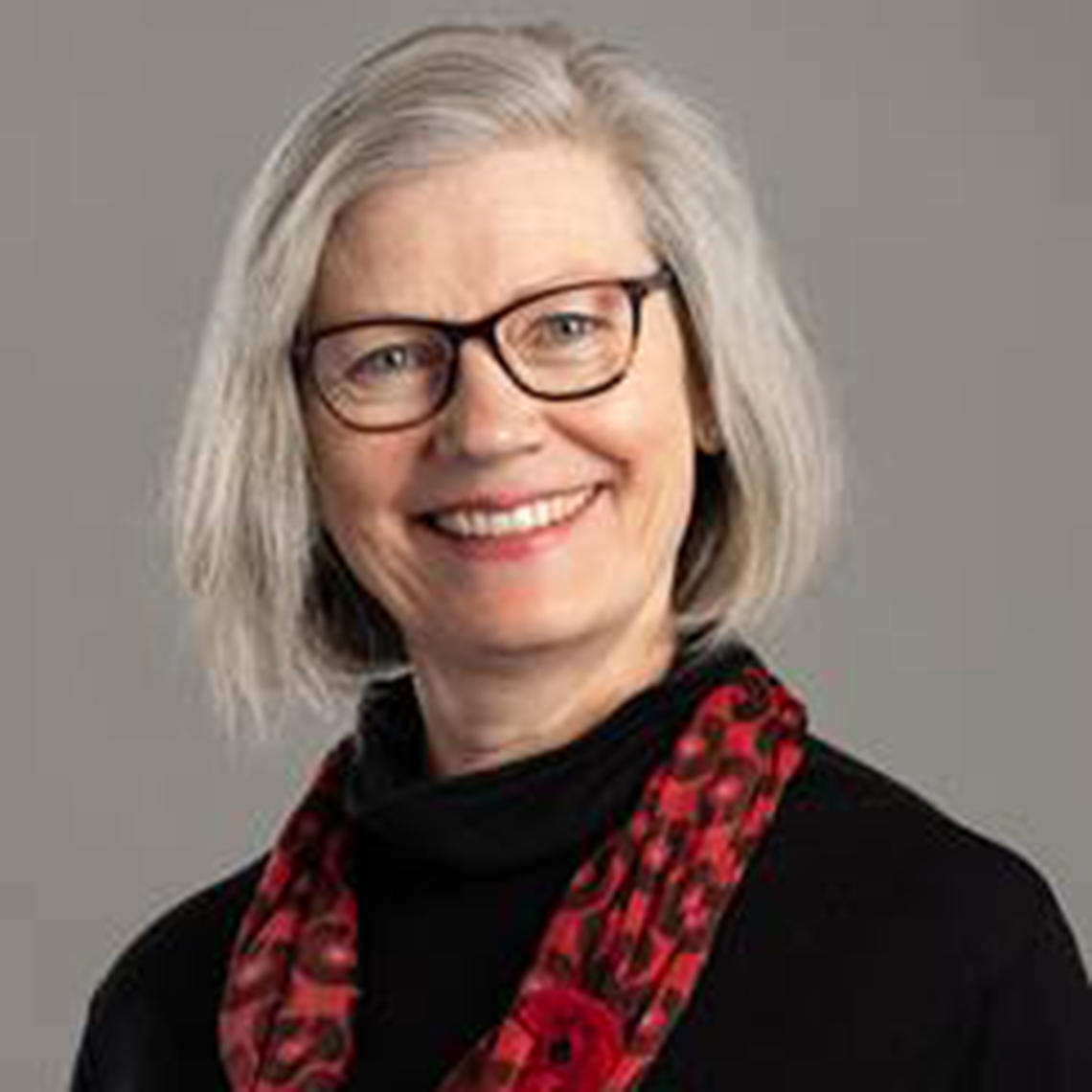
Sharon Nettleton
Sharon Nettleton is one of the founding members of Patients for Patient Safety Canada and a former Co-Chair. Sharon’s career has been in health services planning and policy where she has worked over many decades in two provinces; Ontario and Alberta. Sharon has worked with a multitude of patients/families, health leaders, planners, policy makers and care providers to implement change and help make improvements together.
WHAT IS A REVERSE TRADE SHOW?
A Reverse Trade Show is exactly what the name suggests: a reversal of the traditional trade show format. In this environment, healthcare providers from continuing care settings provide brief presentations on the challenges they face on a daily basis. These providers are then available to network and meet with those interested in their challenge (in this case virtually) to discuss potential technological solutions. The Virtual Reverse Trade Show guarantees opportunities for (virtual) face-to-face time between providers and innovators, entrepreneurs, and industry attendees.

Resources and readings
Alberta Health Services Scientific Advisory Group COVID-19 recommendations, here.
Canadian Institute for Health Information pandemic experience in the long-term care sector, here.
Patients for Patient Safety Canada, here.
Top 10 Covid-19 tech trends, here.
We must act now to prevent a second wave of long-term care deaths, here.
Virtual program keeps connections going for seniors – Recreation therapist moves online after COVID closure, here.
Recreation therapy gets creative – fresh approaches to activity keep seniors engaged during pandemic, here.
Ernest & Nyna dance on with Innisfail Connects – virtual community offers music, cooking, crafting & connection, here.
Virtual Visits continue to make a world of difference, here.
Continuing care residents can stay connected in isolation thanks to donor generosity, here.
Seniors' centre without walls, here.
Technology divide among OAs during the pandemic, here.
Attendee survey results | July 7
